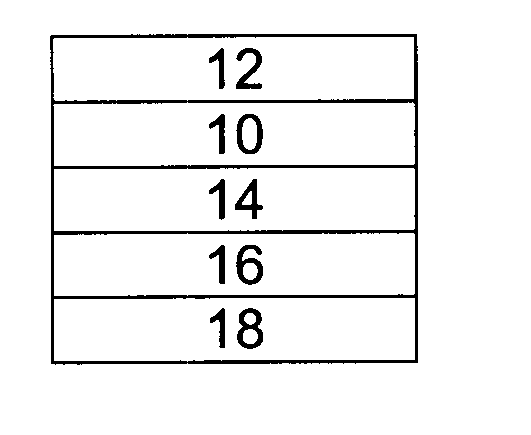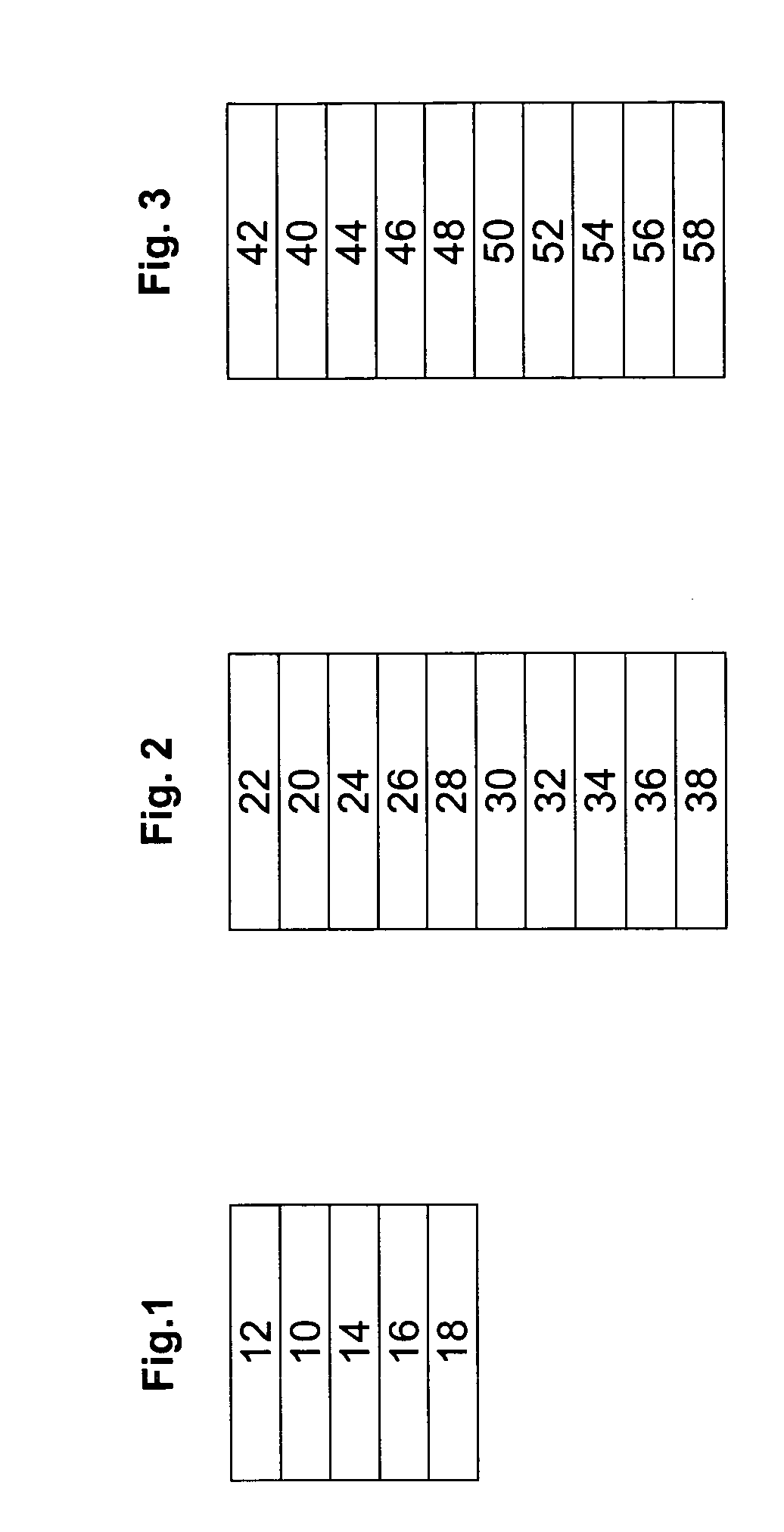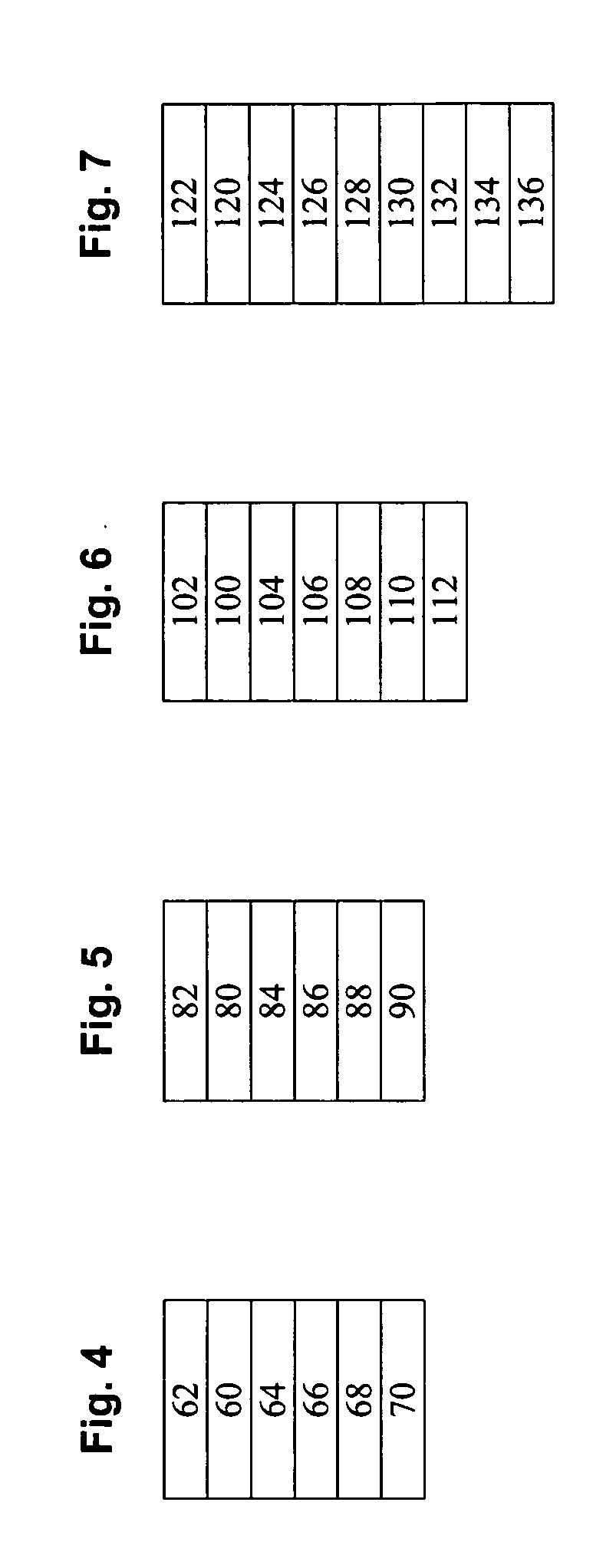Barrier laminate containing partially aromatic nylon materials, blank constructed from the barrier laminate, and container constructed from the barrier laminate
- Summary
- Abstract
- Description
- Claims
- Application Information
AI Technical Summary
Benefits of technology
Problems solved by technology
Method used
Image
Examples
example 1
[0072] Structures consistent with the format of FIG. 1 were produced using 12 lbs. low density polyethylene in outer gloss layer 12, 5 lbs. nylon in barrier layer 14, 1.5 lbs. maleic anhydride tie in tie layer 16, and 14 lbs. low density polyethylene in the inner product contact layer 18. Structure 1 contains an 80% MXD6 / MXDI and 20% nylon 6 blend in barrier layer 14, Structure 2 contains an 80% MXD6 and 20% nylon 6 blend in barrier layer 14, and Structure 3 contains nylon 6 alone in barrier layer 14.
[0073] The oxygen transmission rate (cc / 100 in2-day-atm) of each laminate was measured at 23° C. / 50% RH and 23° C. / 80% RH using a MOCON instrument. Results are shown in the table below.
LaminateOTR at 23° C. / 50% RHOTR at 23° C. / 80% RHStructure 10.220.27Structure 20.220.25Structure 30.512.62
[0074] The oxygen transmission rate (OTR) results are equivalent for Structure 1 and Structure 2. The OTR of Structure 3, which does not contain a specialty nylon, is significantly poorer.
example 2
[0075] The laminates of Example 1 were converted into liter gable top cartons and filled with orange juice. The cartons were stored at refrigerated conditions and tested periodically across a sixty-three (63) day shelf life for vitamin C retention. The percent vitamin C retained in the orange juice is depicted in FIG. 8. Vitamin C retention was 6% and 20% higher in Structure 1 cartons compared to Structures 2 and 3, respectively.
example 3
[0076] Cartons made from Structures 1, 2, and 3 of Example 2 were tested for carton bulge across a twenty-eight (28) day period. The cartons were filled with skim milk and stored freestanding (i.e., not touching the adjacent cartons) at refrigerated conditions. The carton bulge is the average of measurements taken in both the side-to-side and gable-to-gable dimensions. All results are statistically equivalent for a given test day as shown by the overlapping error bars in FIG. 9. The specialty nylon materials in Structures 1 and 2 show a comparable level of bulge resistance to standard nylon 6 in Structure 3.
PUM
| Property | Measurement | Unit |
|---|---|---|
| Volume | aaaaa | aaaaa |
| Volume | aaaaa | aaaaa |
| Volume | aaaaa | aaaaa |
Abstract
Description
Claims
Application Information
 Login to view more
Login to view more - R&D Engineer
- R&D Manager
- IP Professional
- Industry Leading Data Capabilities
- Powerful AI technology
- Patent DNA Extraction
Browse by: Latest US Patents, China's latest patents, Technical Efficacy Thesaurus, Application Domain, Technology Topic.
© 2024 PatSnap. All rights reserved.Legal|Privacy policy|Modern Slavery Act Transparency Statement|Sitemap



